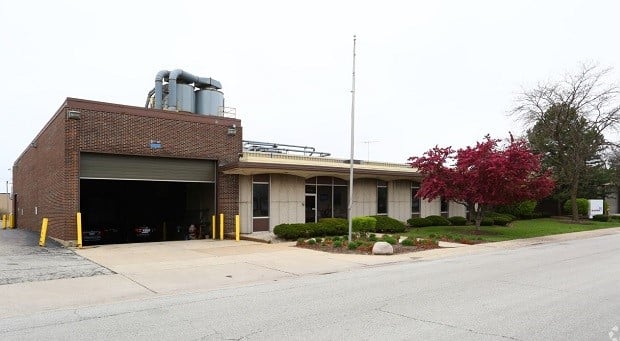
CHICAGO—Developers have been transforming the industrial market around O'Hare by purchasing many of its aging, obsolete structures and replacing them with modern distribution buildings. Seefried Industrial Properties, Inc. is about to launch another of these projects in Elk Grove Village, but the coming years will most likely see fewer such deals.
“We are toward the back end of this cycle, not because of any weakness in the market, but because investors and developers have been at it for two of three years,” Mike Antonelli, vice president of sales for Brown Commercial Group, tells GlobeSt.com. Demand for new, modern distribution buildings near the airport remains intense, but the opportunities are thinning out.
Seefried plans to build an 80,000 square foot, class A warehouse at 2001 Arthur Ave. in Elk Grove Village after demolishing the site's current 126,537 square foot building. Antonelli and Mason Hezner, senior associate, represented the seller, Spirit Realty Capital, which originally purchased the asset as part of a larger portfolio acquisition.
“It was not the most efficient building,” Antonelli says. Like many in the neighborhood, it was underdocked, with a low ceiling, and a lot of deferred maintenance. When the property hit the market, “we had a couple of users come to us and say they could use the building as is, but the strong majority of the interest came from developers.”
Chicago's industrial market has seen significant construction activity since 2013, with approximately 80 million square feet of new inventory added. Most of the buildings were designed for large manufacturing and distribution businesses as well as the growing e-commerce sector.
And a new class A warehouse of this size will be a welcome addition to Elk Grove Village. “The vacancy rate there is about 4%, and maybe a little less than that,” Antonelli says. That's a big drop from 2010, when it was in double digits. “We all have clients that are looking for space, but there is a lack of inventory.” Users around the airport frequently find themselves having to settle for space that does not quite fit their needs, whether due to low ceilings, not enough docks or a lack of amenities. “There are spaces out there, but they have to make sacrifices.”
“Much of the industrial construction activity in the past several years has been focused on buildings that are 250,000 square feet and larger,” Antonelli adds. “There is a significant need right now for buildings that are 100,000 square feet and under that can serve mid-sized users.”
Want to continue reading?
Become a Free ALM Digital Reader.
Once you are an ALM Digital Member, you’ll receive:
- Breaking commercial real estate news and analysis, on-site and via our newsletters and custom alerts
- Educational webcasts, white papers, and ebooks from industry thought leaders
- Critical coverage of the property casualty insurance and financial advisory markets on our other ALM sites, PropertyCasualty360 and ThinkAdvisor
Already have an account? Sign In Now
*May exclude premium content© 2025 ALM Global, LLC, All Rights Reserved. Request academic re-use from www.copyright.com. All other uses, submit a request to [email protected]. For more information visit Asset & Logo Licensing.








